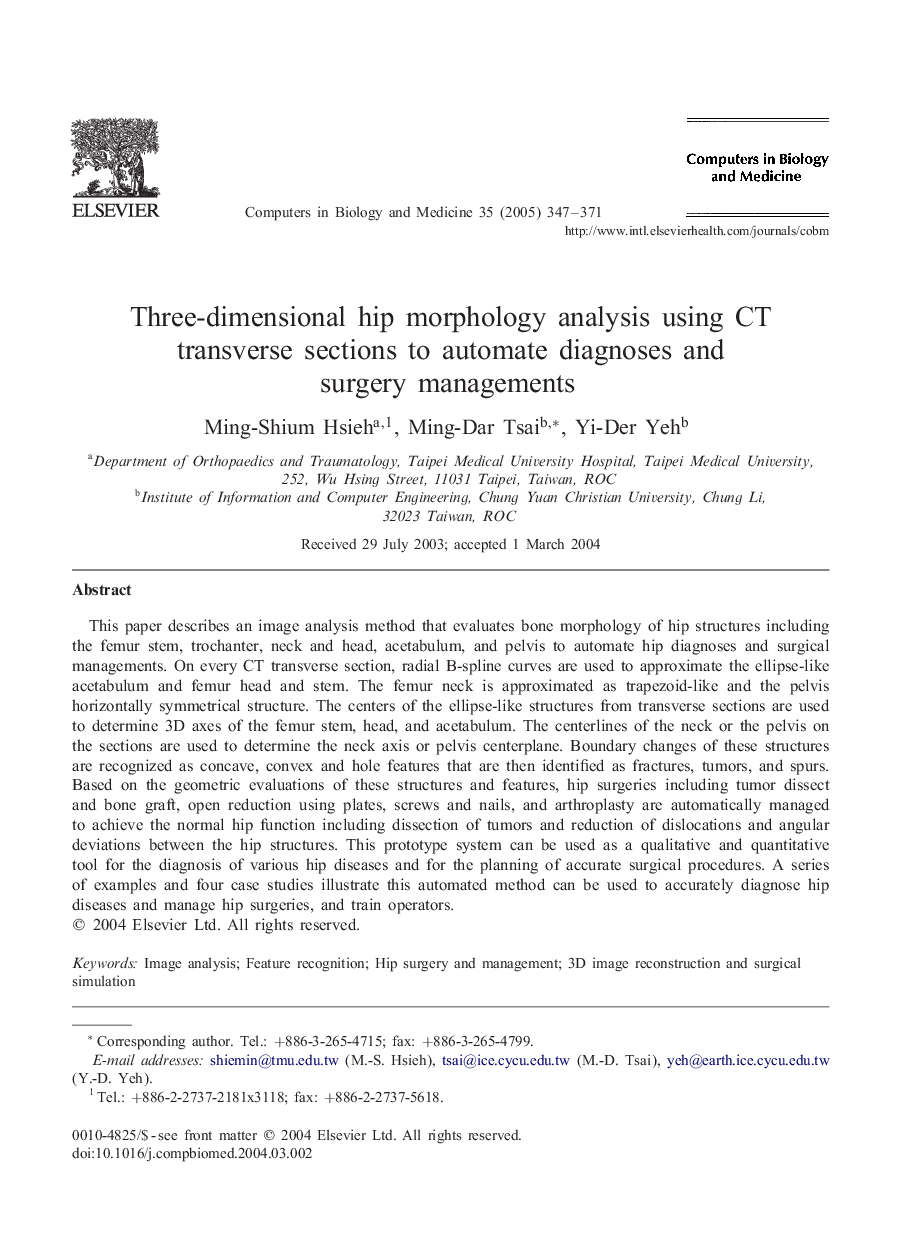| Article ID | Journal | Published Year | Pages | File Type |
|---|---|---|---|---|
| 10351865 | Computers in Biology and Medicine | 2005 | 25 Pages |
Abstract
This paper describes an image analysis method that evaluates bone morphology of hip structures including the femur stem, trochanter, neck and head, acetabulum, and pelvis to automate hip diagnoses and surgical managements. On every CT transverse section, radial B-spline curves are used to approximate the ellipse-like acetabulum and femur head and stem. The femur neck is approximated as trapezoid-like and the pelvis horizontally symmetrical structure. The centers of the ellipse-like structures from transverse sections are used to determine 3D axes of the femur stem, head, and acetabulum. The centerlines of the neck or the pelvis on the sections are used to determine the neck axis or pelvis centerplane. Boundary changes of these structures are recognized as concave, convex and hole features that are then identified as fractures, tumors, and spurs. Based on the geometric evaluations of these structures and features, hip surgeries including tumor dissect and bone graft, open reduction using plates, screws and nails, and arthroplasty are automatically managed to achieve the normal hip function including dissection of tumors and reduction of dislocations and angular deviations between the hip structures. This prototype system can be used as a qualitative and quantitative tool for the diagnosis of various hip diseases and for the planning of accurate surgical procedures. A series of examples and four case studies illustrate this automated method can be used to accurately diagnose hip diseases and manage hip surgeries, and train operators.
Keywords
Related Topics
Physical Sciences and Engineering
Computer Science
Computer Science Applications
Authors
Ming-Shium Hsieh, Ming-Dar Tsai, Yi-Der Yeh,
